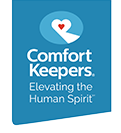Window into Independence
It’s been said that the eyes represent the window to the soul, but when you think about it, they’re also the window into our reality – a window that we often take for granted. And perhaps it’s because we can’t actually see our eyes that we don’t usually think about their health until our vision begins to diminish. However, as we age, it becomes more imperative that we safeguard our vision before problems – like cataracts, age-related macular degeneration, and diabetic retinopathy – arise.
While the symptoms of these conditions may be mild initially, they can ultimately result in seniors having to give up many of things that promote their independence, including activities of daily living. Fortunately, seniors can take steps to reduce their risk of visual impairment. Perhaps the most important action for seniors to take is to have their eyes consistently examined.
Every 12 minutes, someone in Canada begins to lose their eyesight. But 75 per cent of vision loss can be prevented.
The Importance of Eye Exams
Regularly scheduled checkups are fundamental to protecting our eyesight, especially as we get older. Comprehensive eye exams, which generally look at four key components of vision (eye alignment, visual acuity, depth perception, and eye movement), help in determining any correctable refractive errors so that any necessary aids can be prescribed. Although some seniors may only require glasses or contacts to help correct these more minor issues, others rely on eye exams to help detect the presence of eye diseases, often early in their development and before any major damage has occurred. What’s more, optometrists can often detect other general health problems, such as high cholesterol, diabetes, and hypertension, while examining the eyes.
The Ontario Association of Optometrists recommends that adults over the age of 65 receive eye exams once every year, or more if vision becomes noticeably different. The earlier something is detected, the faster treatment can begin. Of course, eye exams are only part of the equation. Seniors can be proactive and protect their eyes by making healthy lifestyle choices as well.
Note: Seniors should always consult their physician before changing diet or beginning any exercise regimen.
Lifestyle Changes
- Diet – Replace processed foods and refined carbohydrates with a diet that includes fresh fruits and vegetables, as well as foods rich in antioxidants (vitamins A and C). Switch from sugary drinks, like soda and juice, to water. Higher sugar intake can cause the eye’s lens to swell. Additionally, Omega-3 fatty acids, found in many cold-water fish, have been found to help reduce the risk of eye disease.
- Quit Smoking – In addition to causing heart disease and lung cancer, smoking can also contribute to vision loss. In fact, the risk of developing macular degeneration alone is 2.5 – 3.5 times greater for those who smoke. Seniors should keep in mind that it’s never too late to quit smoking, and the body will actually begin to heal within days of quitting.
- Shield the eyes – Particularly between the hours of 11AM and 3PM, the sun’s ultraviolet light is at its most powerful. The rays emitted from this light are certainly dangerous to your skin, but your eyes are just as vulnerable. The solution is to wear UV-blocking sunglasses, as well as wide brim hats that can offer extra protection.
- Exercise – It’s recommended that seniors get at least 20 minutes of moderate physical activity each day. Low-impact exercises, such as walking, swimming, and cycling, are often some of the most beneficial for seniors because they aren’t as hard on the body but are still intense enough to elevate the heart rate.
- Reduce ‘Digital Eye Strain’ – We’re fortunate to live in a digital age where seniors have access to technology that allows them to stay connected, but many devices can cause issues like dry eyes, blurred vision, and eye pain. In fact, collectively these symptoms have an official name: digital eye strain. To help combat this, seniors should take frequent breaks from their digital devices, reduce any overhead light to eliminate glare, and position themselves at an arm’s distance away from the screen. They can also purchase specialty eyewear that features strain-reducing capabilities.
Comfort Keepers® Can Help
Seniors should feel empowered knowing that they can take steps to protect their vision and reduce the risk of eye diseases. But when they need some additional help, Comfort Keepers® is there to offer the support they need. Our caregivers can help establish daily routines that promote good health and independent living. Caregivers can also provide transportation to and from medical appointments or anywhere else clients need to go. Contact your nearest Comfort Keepers location to learn more about our in-home care services.
References:
Canadian National Institute for the Blind. “Seeing Beyond Vision Loss.” Web 2018.
Ontario Association of Optometrists. The Eye Exam for Seniors”. Web. 2018.
VSP. “Seniors’ Sign: Yearly Checkups a Must.” Web. 2018.
Natural Eye Care. “Eye Care for Seniors,” by Dr. Grossman. Web. 2018.
The Vision Council. “Digital Eye Strain” Web. 2018.
Bausch and Lomb. “60s+ Eye Health.” Web. 2018.

